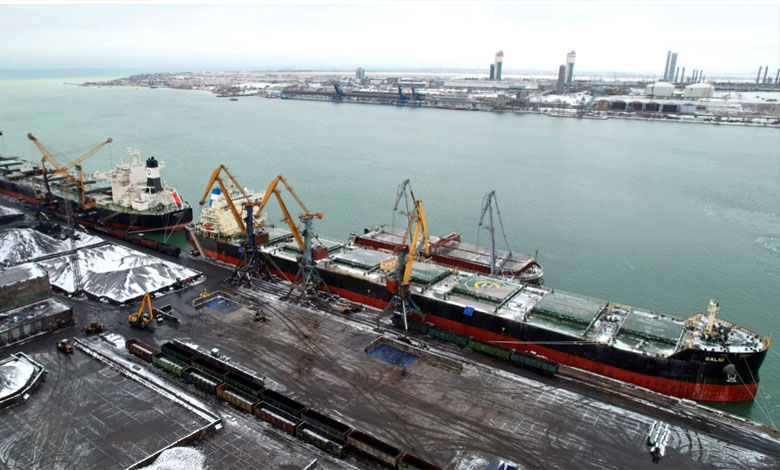Ports under fire, but not broken: how Ukraine saves maritime logistics during war

Last weekend was 12 years since I was in Ukraine appeared the body that manages the state’s maritime infrastructure. It was created in 2013 with an ambitious goal: the state was supposed to retain control over strategic objects, and transfer the daily work of ports — cargo handling, logistics, and maintenance — to private hands. It was a European approach: less bureaucracy, more transparency and opportunities for investment.
But then everything did not go according to the ideal plan. Russian aggression has endangered both logistics and the very idea of openness. Despite everything, the ports survived. And even during war, they remain critically important. If earlier more than 75% of our exports went by sea, now it is about 60%. That’s still the majority. It’s not just about numbers, it’s about grain, steel, products — everything that feeds and supports the economy.
Even in a state of war, maritime logistics keep the country afloat. Ukrainian ports have not only not disappeared from the world trade map, but also remain the lifeblood of our economy. And this is definitely not something that can be taken for granted.
From Soviet bureaucracy to European partnership: how Ukraine opened its ports for business
Until 2013, ports in Ukraine worked in the old way, dating back to Soviet times. The state managed everything by itself: it established rules, transported goods, and leased businesses. It was all too confusing, inefficient and corrupt. The queue for berths is due to “connections”, the rules are not transparent, investors are in shock. Plus, the infrastructure was aging before our eyes, there was no money for repairs. International partners also put pressure on you: they say, things won’t work out that way, either you reform or no one will believe you.
In Europe, there are several models of how ports can be managed. It all depends on who does what – the state or private individuals. There are models where the state manages everything by itself: owns ports, provides services, controls everything from start to finish. There are those where the state provides the infrastructure, and the business works on its own. And there is the most popular — the so-called “port – lessor” model. Here, the state owns the land, berths and fairways, and private companies lease these facilities and provide services: cargo prevails, terminals are built, and customers compete.
It was this model that started implement Ukraine after 2013, having created AMPU. And business was allowed to enter the ports on fair terms: rent, invest, develop. In several ports, in particular, Kherson or Olbia, the state even went for a full concession — handed over terminal management for years to come to private operators. This is a serious step towards partnership between the state and business.
As a result, there was more transparency, competition and new money appeared. Thanks to electronic tenders, everything is now visible online — without backrooms. But not without problems: Ukrainian ports are still have tariffs are too high — much higher than those of neighbors, and this inhibits development.
In a word, the course is correct — both for the EU and for the partnership. But there is still a lot of work ahead: it is necessary to simplify the conditions, reduce barriers and develop the ports further so that they are not only state facilities, but live growth points for business.
Ports under the crosshairs, but not on the knees: how AMPU saves the export artery of Ukraine during the war
Until the great war, AMPU kept pace. In 2021, the profit exceeded 2 billion hryvnias, and even for 2022, despite all the alarming signals, almost the same figures were predicted. Serious investments were made in the infrastructure: berths in Greater Odessa and on the Danube were modernized, dredging was carried out, public-private agreements were concluded, and concessions were launched, in particular, in Kherson and Olbia. The port system was gradually transitioning from a survival mode to a development mode.
But on February 24, 2022, that’s all turned over. Due to the Russian invasion, cargo turnover in seaports collapsed almost three times – to 50 million tons. Most of the southern harbors are under siege, logistics are under threat. However, the country was rescued by the Danube ports: Izmail, Reni, and Ust-Dunaisk dramatically increased volumes — several times more than before the war. It was a real “reanimation of transshipment”, which kept the system from paralysis.
To prevent this extraordinary logistics from turning into chaos, AMPU quickly introduced an electronic queue for vessels in the Danube region, tripled the number of pilots, and unified rates for access to berths – all for transparency, speed and reduction of corruption risks.
Last year, despite the martial law, capital investments reached 829 million hryvnias. They were directed to the restoration of critical infrastructure and dredging — basic things without which even partial functioning of ports is impossible.
Russian aggression dealt a powerful blow to ports: Ukraine lost access to most sea gates. Mariupol became a military base, Berdyansk was occupied. Ukrainian grain was exported from there. The port of Kherson, although liberated, remains under constant surveillance. Skadovsk, Henichesk – actually stopped. Total infrastructure losses are colossal, with nearly $3 billion worth of damage in the first year of full-scale war. Destroyed or lost control over berths, terminals, cranes and, most importantly, the fleet: about 90% of vessels operating in the Azov region are either captured or blocked.
But even under such conditions, logistics did not stop. The ports of Great Odesa — Odesa, Pivdenny, Chornomorsk — have been partially operational since July 2022 within “grain agreement“, which operated for a year. After its failure, Ukraine developed its own maritime corridor – without international guarantees, but under the protection of its military. Ships began to go around – and this path worked.
The main burden fell on the shoulders of the Danube ports. After the attacks on the grain infrastructure in July 2023, Izmail became the main transshipment point: records were set there every month. A logistical lifeline steel and “corridors of solidarity” — railway routes through Poland, Romania, and Slovakia. They are slow, expensive, but without them the economy simply could not survive.
Despite shelling, losses and blockade, the port system survived. AMPU was able to adapt, provided critical infrastructure and became the framework on which exports are supported, and with it, part of the Ukrainian economy.
How do ports hold up under fire?
From the first day of the full-scale invasion, Ukrainian ports are literally under the crosshairs. The Russians beat and beat – with missiles, drones, leaving mines in the sea. According to official data for July 2024, more than 260 objects of the port infrastructure were damaged or destroyed, plus 17 civilian ships were also affected. But the work did not stop.
The ports did not just resist – they rebuilt the entire logic of work to at least somehow resist the attacks. In particular, they implemented electronic queues for ships so that there was no crowding, because a bunch of ships in one place is an ideal target for the enemy.
Landmines are one of the biggest threats. The Russian Navy is demining water areas, especially around Odesa. But this is not possible everywhere – shelling, new minefields, constant risks.
The military escorts merchant ships through dangerous areas. Both reconnaissance drones and satellites are turned on – all available technology to see the threat in advance. There are temporary restrictions – ships do not sail in certain areas of the Black Sea. This is done to reduce risks for crews and avoid fatal situations.
Is it realistic to fully restore maritime trade right now? Not at all, because the war is going on. But this does not mean that everything is frozen. Ukraine in January signed with Estonia, a memorandum on the restoration of the maritime industry — it has both a civil part (i.e. logistics, ports, cargo) and a military part (defense, escort, maritime security).
Also the government of Ukraine confirmed maritime security strategy action plan. That is, not just “how to survive under shelling”, but how to regain control, make the sea a way for trade again, and not a risk zone. It’s a long game — but the work goes on every day.
Tetyana Viktorova





